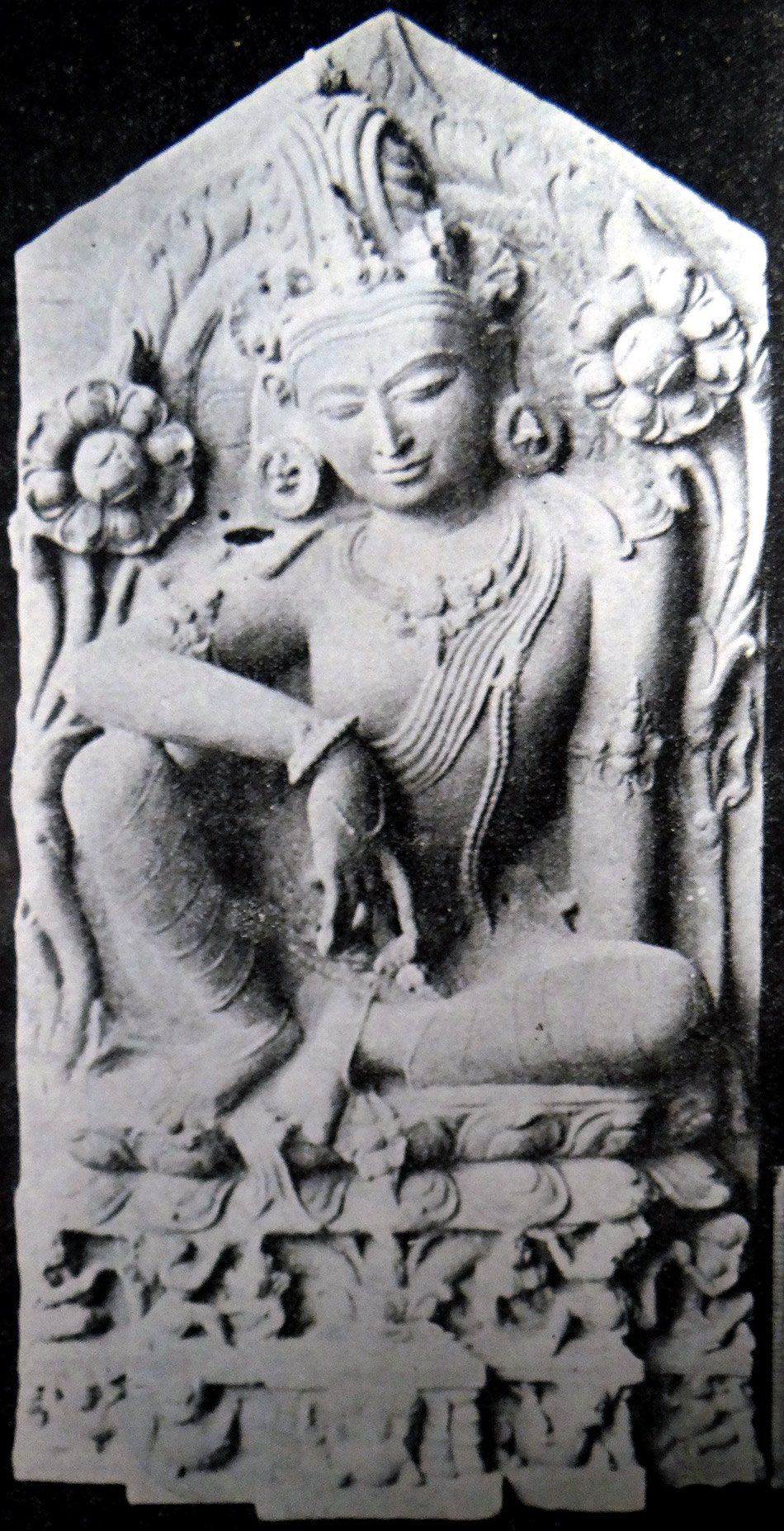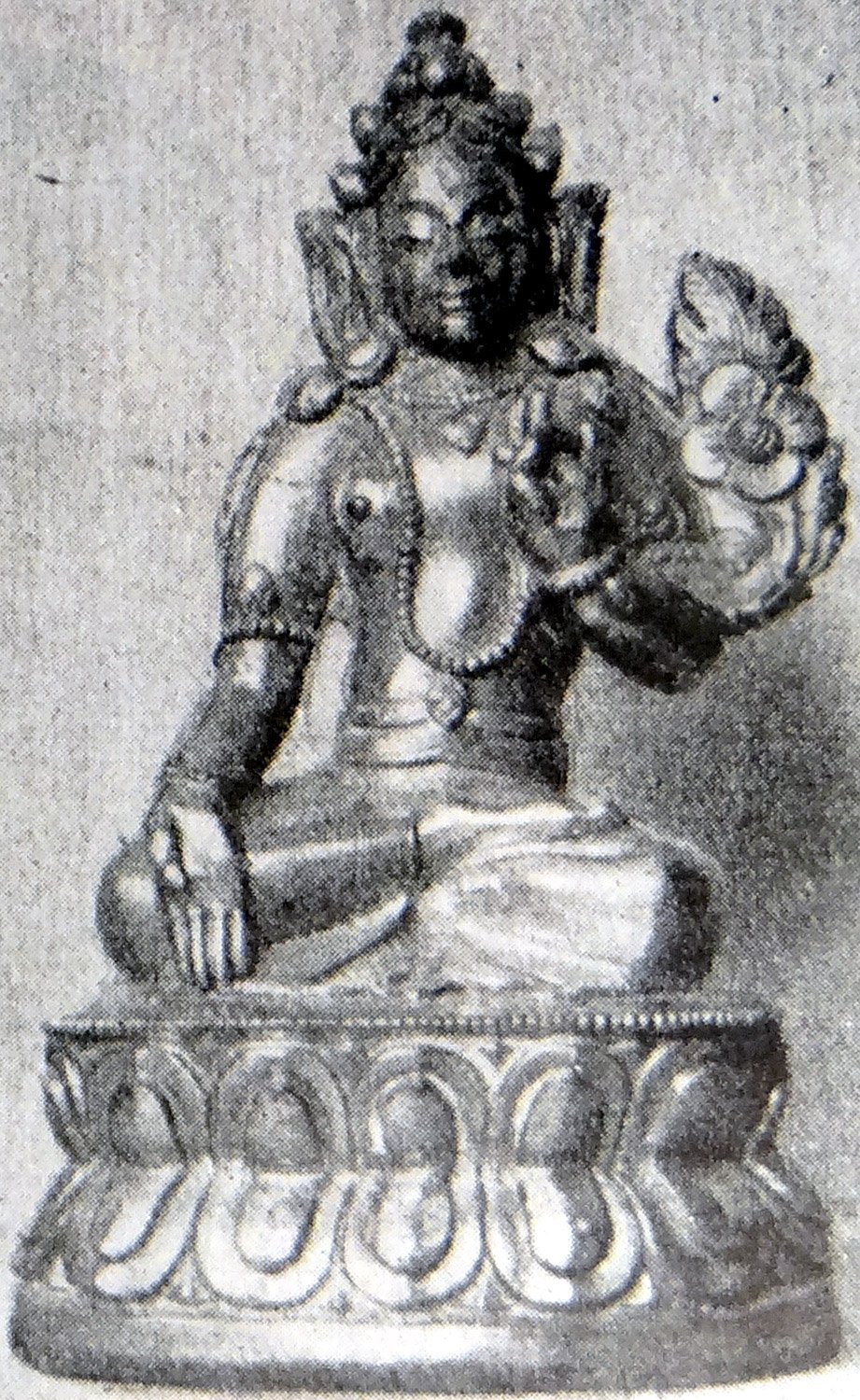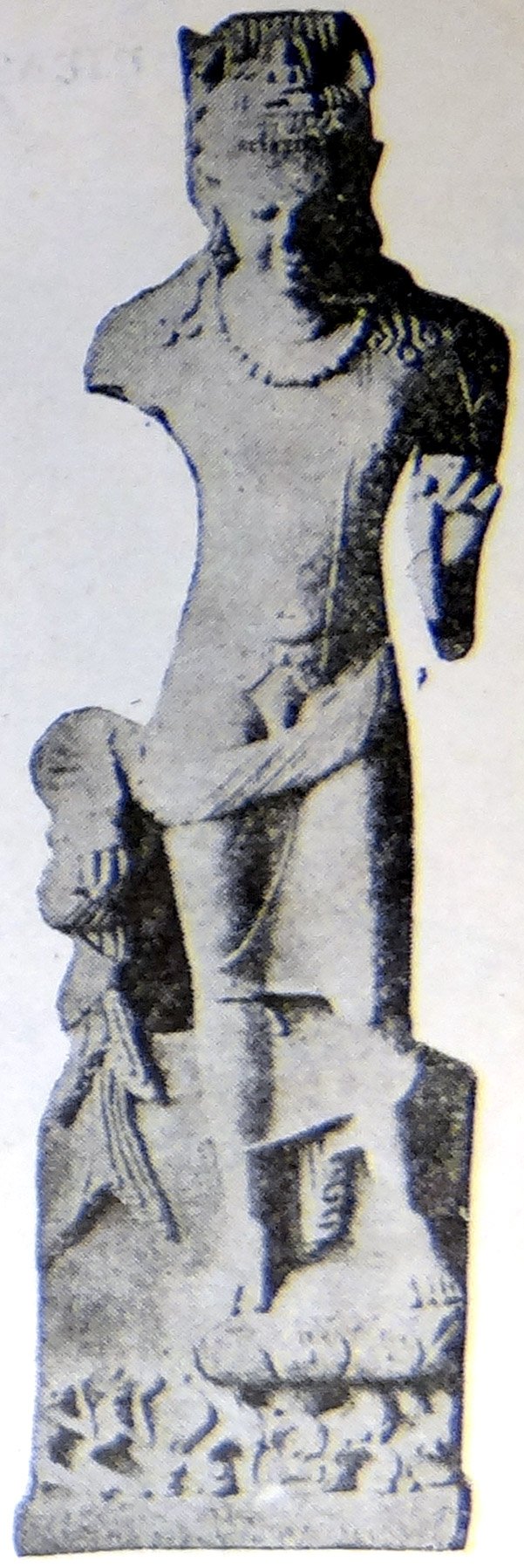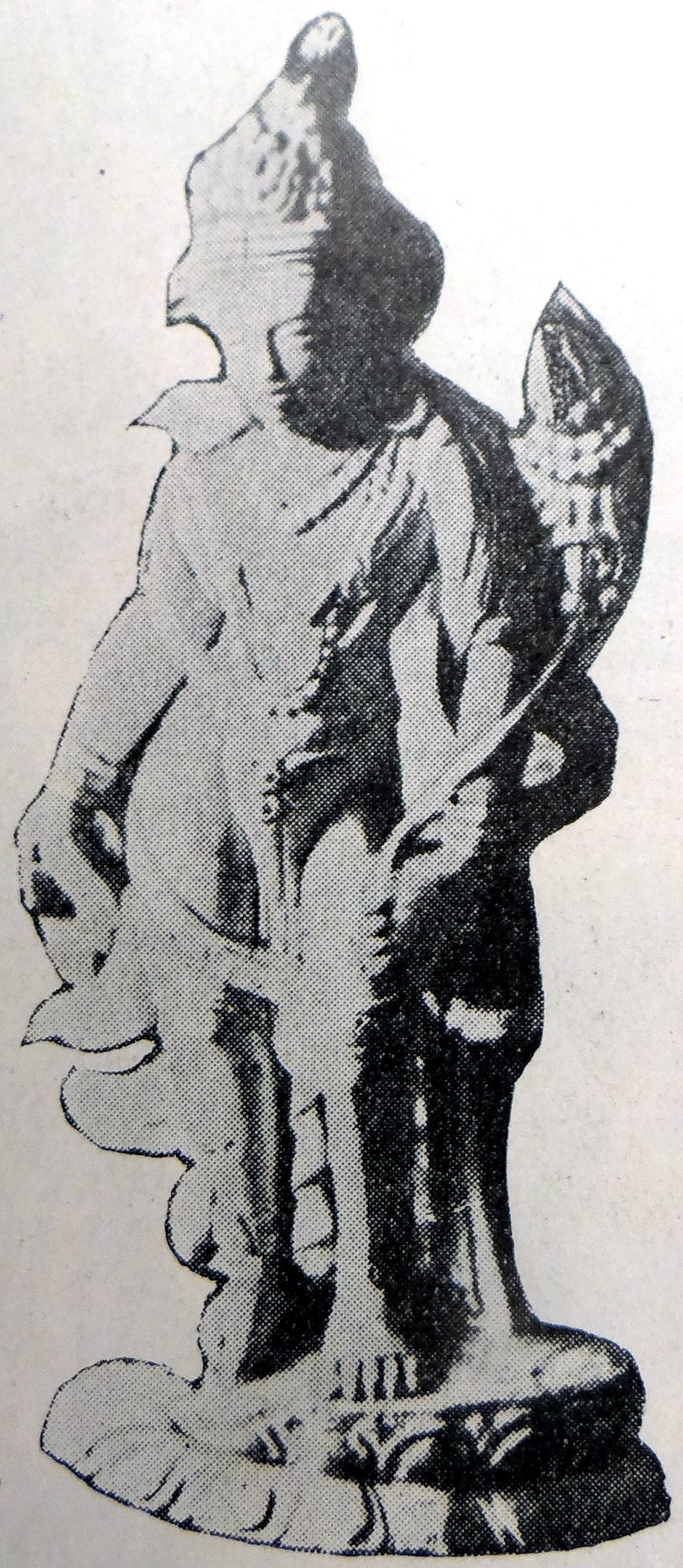The Indian Buddhist Iconography
by Benoytosh Bhattachacharyya | 1958 | 51,392 words | ISBN-10: 8173053138 | ISBN-13: 9788173053139
This page contains an iconography image of (Avalokiteshvara): Lokanatha and represents figure 105-108 of the book Indian Buddhist Iconography, based on extracts of the Sadhanamala English translation. These plates and illustrations represent either photographs of sculptures or line-drawing reproductions of paintings or other representations of Buddhist artwork.
Figure 105-108 - (Avalokiteśvara): Lokanātha
 Figure 105: Lokanātha (Mohaba) |
 Figure 106: Lokanātha (Baroda Museum) |
 Figure 107: Lokanātha (Sarnath) |
 Figure 108: Lokanātha (Nepal) |
Four Sādhanas are devoted to the worship of the Lokanātha form of Avalokiteśvara. He is single in three Sādhanas and only one Sādhana describes him as accompanied by Tārā and Hayagrīva. The same Sādhana adds further that Lokanātha should be accompanied also by the eight Bodhisattvas: Maitreya, Kṣitigarbha, Vajrapāṇī, Khagarbha, Viṣkambhin, Samantabhadra, Mañjughoṣa, and Gaganagañja, and by the four goddesses: Dhūpā, Puṣpā, Gandhā, and Dīpā, and by the four guardians of the gates: Vajrāṅkuśī, Vajrapāśī, Vajrasphoṭā and Vajraghaṇṭā, In other words the Sādhana gives the constitution of the whole Maṇḍala of Lokanātha. The principal god has two hands and carries the lotus in the left hand and exhibits the Varada pose in the right, exactly like Khasarpaṇa previously described.
When represented, Lokanātha is generally alone and is occasionally accompanied by Tārā and Hayagrīva. In paintings of the complete Maṇḍala alone all the companion deities are expected to be present. Lokanātha may sit in three attitudes according to three different Sādhanas ; he may have the Lalita, the Paryaṅka or the Vajraparyaṅka attitude. Out of all images of Lokanātha so far discovered, the one from Mahoba is perhaps the best and the most artistic (Fig. 105), There is a fine bronze of Lokanātha (Fig 106) in the Baroda Museum. The Sarnath image (Fig- 107) shows the miniature figure of Amitābha in the Samādhi mudrā on the crown. The Nepal image is made of pure ivory (Fig. 108). These last two represent Lokanātha in the standing attitude.
Colour: white;
Symbol: lotus;
Mudrā: varada;
